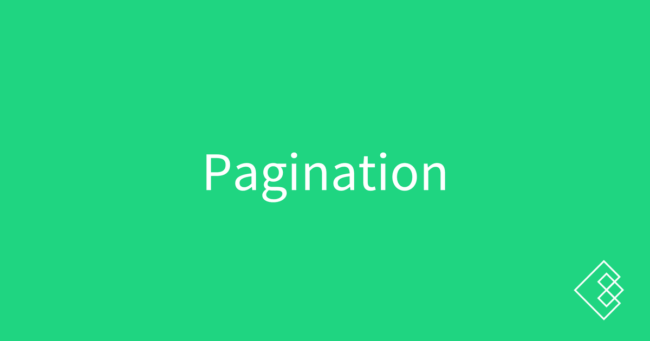What is pagination for SEO?
Often on very large websites, you will deal with the situation where you cannot load all of your products or content on one page, therefore you must paginate. This happens on the simplest of blogs as well when you publish more posts than the homepage or a category allows, often 10-15.
In that case, there are three places to control pagination for SEO. All three are useful to search engines, though the first is also useful to users:
- At the bottom of the page.
- In the <head> of the page using rel=next and rel=prev

Bottom of page SEO pagination
The classic way to show pagination both to users and search engines is at the bottom of a page.
Pagination is important to users because it allows them to move to deeper pages to browse content. Some sites use infinite scroll instead of pagination, which has its own set of challenges for SEO and must use rel next/prev as discussed next.
Here is an example from Creative Market and how they handle pagination:

Correctly optimized on-page optimization like this, which is important to send link equity to products/content on deep pages, means it must:
- Link to the following few pages from the current page
- If on a deeper page, link to the preceding and following pages
- Always link to the first and second pages
- Always link to the last two pages
- Next and previous buttons are recommended for users, but make no difference for SEO purposes
Rel Next/Prev
In September 2011 Google announced that they were beginning to support the rel=next and rel=previous directives to sort out duplicate content issues. For years before, they had always had issues determining the first page in a set of pagination.
Rel next/prev were and continue to be a solution to solve this ongoing problem.
In a nutshell, rel next/prev are:
- Contained within the <head> section of a site
- If on the first page, only rel=next is used and points to the second page
- If the last page in pagination, only rel=prev is used and points to the preceding page
- Each intermediary page contains both next and prev
- The next and prev should also match the URL scheme contained in the onpage pagination
Rel next/prev code
The rel next/prev code looks thus (for page 2 in this case):
<link rel="prev" href="http://www.example.com/article?story=abc&page=1" />
<link rel="next" href="http://www.example.com/article?story=abc&page=3" />
Pagination and canonicals
The question of how to use canonicals when paginating content is one that comes up time and time again. Some will say to canonical your pagination to the base. Others will say to self-canonical. Still others will say to remove canonicals and use rel next/prev to tell search engines where to go.
My approach to pagination and canonicals is to self-canonical paginated pages. This way, you do not risk the search engines simply following that directive, going back to the first page, and ignoring the products/etc that are listed on the deeper pagination. Remember: part of the reason for pagination is to help search engines find older products!
So the rel=next/prev and canonical setip on &page=2 from the above example will be:
<link rel="canonical" href="http://www.example.com/article?story=abc&page=2" />
<link rel="prev" href="http://www.example.com/article?story=abc&page=1" />
<link rel="next" href="http://www.example.com/article?story=abc&page=3" />
Final notes
At this point, it is not possible to tell search engines within their respective Search Console (Google) or Webmaster Tools (Bing) that a parameter is used for pagination.


